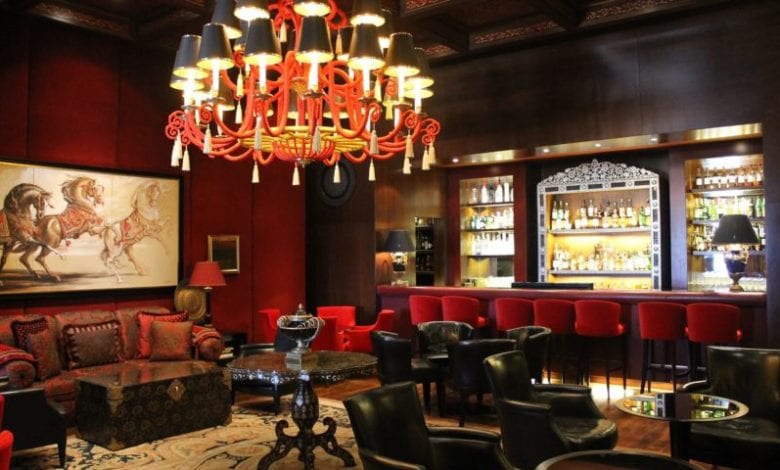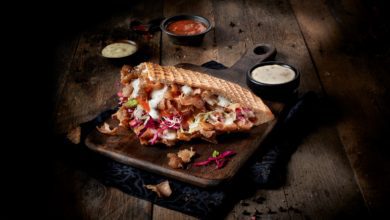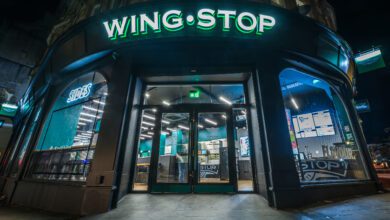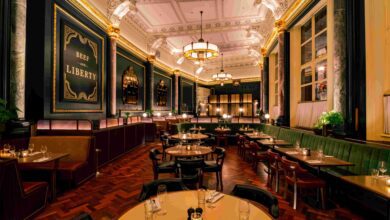Merging the boundaries between pubs and restaurants

Register to get 1 free article
Reveal the article below by registering for our email newsletter.
Want unlimited access? View Plans
Already have an account? Sign in
Like most industries, the restaurant sector is subject to trends, dictated by hungry consumers and innovative chefs. Emerging concepts and innovation will always be a talking point, just a quick look at the latest TV hit ‘Million Pound Menu’, where individuals try to establish a new style of food offering in an overcrowded market, vying for investor backing. The ‘Dragon’s Den’-like programme showcases a vast array of creative concepts, but also allows the viewer insight into the world of the start-up/investor relationship.
However, there is a significant trend and shift in restaurant operations, which when compared to innovation is harder to notice, the merging markets. ‘Million Pound Menu’ even hints towards this, as start-up Hollings, who appear on the show, offer their customers ‘Tiny Tinis’, mini versions of cocktails as their version of an appetiser. The once distinct line between bars, pubs, restaurants and even hotels is starting to blur; and there are now a host of venues which can see you through from dinner to well past midnight.
Many restaurants now have a bar area, serving a number of cocktails as well as specialist spirits such as rare gins etc. And in turn, some bars encourage their customers to eat ‘at the pass’, a style which mimics sitting at the bar. Having that additional wet trade is a necessary enhancement to their food operation, both as a compliment to paired dishes but also financially. Some mixologists command high salaries for their knowledge of a wide variety of drinks and which work well with certain foods, and the mark-up for this service provides a healthy return and profit. Furthermore, sometimes the most exciting and newest operators are in high demand, or don’t occupy the largest spaces; an additional bar offering allows visitors to sit at the bar whilst awaiting their table, even being entertained by the mixologist’s show.
Another example is the bottomless brunch trend, a brunch dish with unlimited alcoholic drinks within a time restriction. Independent brands are offering niche bottomless brunch themes, much like the niche afternoon tea trend, with some great examples being reggae brunch, garage brunch and 90s brunch! However, bottomless brunch isn’t exclusive to the independents, high street operators, such as All Bar One, Las Iguanas and Breakfast Club are also reaping the benefits.
As with restaurants, pubs are also experiencing this greater trend of blurring margins. Gastro pubs, a phrase first coined in 1991, described a shift from pubs who offered ploughmans and sandwiches to a wider variety of British dishes. This trend has now developed to sophisticated pub menus, which in some cases are comparable to Michelin style dining.
However, what about pubs who do not want the costs of employing a chef or perhaps don’t have trade kitchen facilities? Many pubs are using the food franchises to introduce street food and independent chefs. These pop-up food franchisees tend to have a limited lifespan of around a year as the chefs want a change of clientele or area to further promote their style of cooking. However, this system allows the operator a chance to keep the food offer current, and also brings in more customers by championing a new cuisine. It also equips a tied lease pub operator with a product which has a higher profit margin than drinks products. Laine Pub Company is a prime example, using street food offerings as a marketing tool. Also, the Old Nun’s Head in Peckham can, in just one week, offer Burger Bears; Garden of Edun (Nigerian cuisine) and Crafty Pies.
Pubs have not only diversified their offering with the addition of food, but also accommodation. However, this is no new phenomenon, before the development of the railway coaching inns provided welcome stops, offering sustenance and accommodation. In recent years, as consumers lose brand loyalty and opt for independent and unique experiences, pub operators have begun to add rooms to their portfolios. Operators such as Cirrus Inns and Upham Pub Company are focusing on supplementing their portfolio with accommodation. Some of the best examples we have seen are Cirrus Inns’ The Welldiggers in Petworth, a site acquired through Fleurets as well as The Culpepper in the City of London.
The hospitality sector is an ever-adapting chameleon, modifying and transforming in order to survive and thrive. Consumer demand and innovative chefs dictate this industry, and it will be exciting to see what changes are yet to come and which operations will adapt, maturing into industry leaders.
By Kate Dowd, associate at leisure and hospitality property specialists, Fleurets







